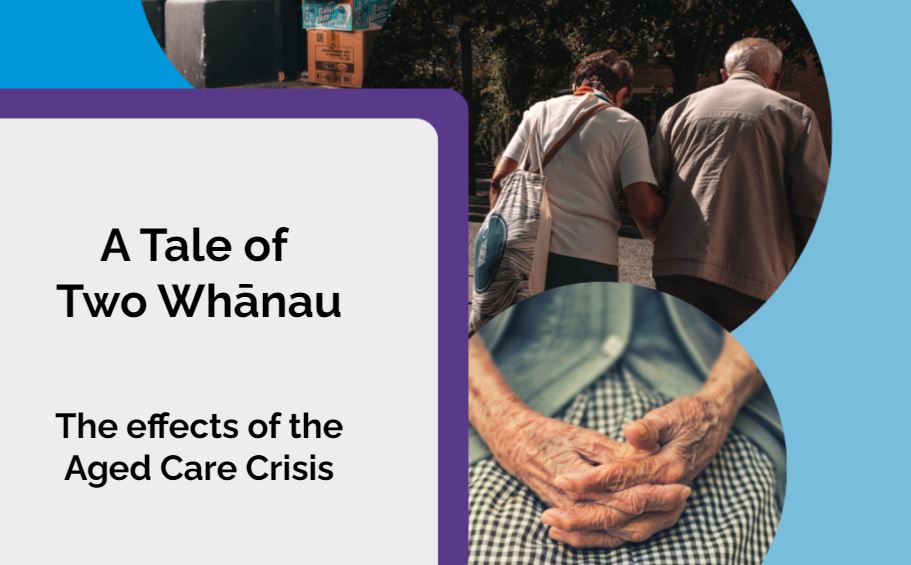A Tale of Two Whānau was created by NZCCSS to refocus the aged care crisis from the organisations and departments attempting to manage it, back to the people at its core.
Rachel Mackay (Kaitātatari Kaupapa Here Mātua | Senior Policy Analyst), who leads our Older Persons portfolio, explains more.

We hear the phrase “Aged Care Crisis” bandied about almost ceaselessly in the sector to the point where the words have almost lost all meaning. How long can something be in crisis before it is simply the new normal? Reports come out regularly itemising how many Standard Beds, nurses, gerontologists, and facilities we are short to meet current need, swiftly followed by how many we will need looking into the future. The numbers are in the thousands, but they are more than just statistics. They reflect thousands of unique, individuals caught up in the perfect storm of ageism, health inequality and systemic underfunding that has left the sector on its knees. While the data shows the magnitude of the issue, it doesn’t reveal to us these individual stories. These numbers cannot convey the experience and emotions of those who are at the mercy of a deprioritised system. For that we need a story.
A Tale of Two Whānau was created to refocus the crisis from the organisations and departments attempting to manage it back to the people at its core. It follows two families, a mother and a daughter in each, as they navigate the trials of aged care in Aotearoa. These families have enormous disparity to begin with – one family are life-long renters across both generations, while the other has significant capital from homeownership – and the struggles of aged care affect them differently. The story occurs across both generations, with the mothers’ stories beginning in 2024 to reflect the likely path of care for kaumātua today. Their daughters’ stories continue on in 2060, and are a reflection of the sector projections if we do not intercede soon. The experiences of the women in this story are supplemented by comments about what their providers are experiencing, and the impact that it has on the care they can provide.
It is not pleasant or easy reading, but we hope it sheds light on how action can impact outcomes. Sandra and Helen speak for the immense disparity and inequity in healthcare in the present, and Tina and Kelly stand as grim spectres of the future if the sector is not put back on track.
We hope that having this narrative laid out can encourage better understanding of the issue and open the gates for conversation about how to change these projections.
